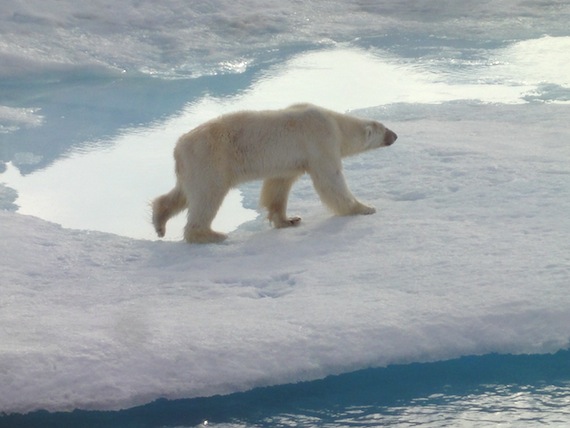Extinction rate of species overestimated: study
Extinctions “require greater loss of habitat than previously thought”

A new study questions the validity of several high-profile reports on extinction, including one that forecast climate change will commit up to 35 per cent of species to extinction by 2050. (PHOTO BY JANE GEORGE)
MARGARET MUNRO
Postmedia News
A war of words is raging over a report that says species are not going to go extinct nearly as fast as predicted.
The study, co-authored by Fangliang He, who holds a Canada research chair at the University of Alberta, says “flawed” assumptions and calculations about how fast bugs, birds and beasts disappear as habitat is destroyed has led to overestimates of the extinction rate, in some case by more than 160 per cent.
The report, published in the journal Nature on Thursday, questions the validity of several high-profile reports on extinction, including one that forecast climate change will commit up to 35 per cent of species to extinction by 2050.
It also notes that several dire predictions, including one that predicted half of all species would be gone by the year 2000, “have not been observed.”
He and his co-author Stephen Hubbell, an ecologist at the University of California Los Angeles, stress that species loss is a “real and growing” threat. But they conclude extinctions “require greater loss of habitat than previously thought.”
All of which has infuriated Stuart Pimm, a conservation biologist at Duke University in Durham, North Carolina.
“It’s total nonsense,” Pimm told Postmedia News in an interview. He says Hubbell and He have misrepresented his work on species loss in North America’s eastern forest, and taken “cheap” and unwarranted shots at the research of others.
British ecologist Chris Thomas is a more diplomatic. But he also takes issue with the way the new study depicts his team’s 2004 report on species loss from climate change as “flawed.”
“I was rather surprised by the tone of the He and Hubbell wording,” says Thomas, at the University of York. He notes that the 2004 study clearly acknowledged that extinction forecasts vary widely depending on the assumptions and methods used to calculate the numbers.
“I agree that better methods are required to estimate extinction risks, but I do not necessarily agree with their conclusion that current estimates are too high,” Thomas said by email.
Hubbell and He say their work highlights long-standing problems with methods used to predict extinction rates from habitat loss.
The findings are “kind of shocking,” Hubbell told reporters in a teleconference, but added one of the good things about science is it is “self-correcting.”
“So when you find a mistake, however egregious, then you have an opportunity to fix it,” Hubbell said.
“We’ve proved mathematically where this overestimation comes from,” says He, who is on sabbatical at China’s Sun Yat-sen University.
They say the magnitude of the overestimation depends on the species and habitat being destroyed, but He says previous estimates of extinction rates from habitat loss can be divided by “roughly” 2.5.
“Clearly this is welcome news in the sense we have bought a little time for saving species,” Hubbell said. “But it’s unwelcome news in one sense because we have to redo a whole lot of research than was done incorrectly.”
Wildlife biologist Andrew Derocher, at the University of Alberta in Edmonton, says the study raises an “interesting mathematical issue” about how extinction rates should be calculated.
“If a biologist is only interested in ticking off the extinction of species one-by-one then this paper will help with estimating how many ticks will occur over time, ” he said.
But he says the findings don’t change the real and growing threats species face from habitat loss and fragmentation and climate change.
“We’re likely to have polar bears alive as a species in the upper reaches of the Arctic until the end of the century, but if they’ve disappeared everywhere else due to climate change can we consider ourselves good stewards of the planet?” says Derocher, who describes current conservation efforts as “perfectly designed to fragment and manage many species into extinction.”
The new study focuses “on when the last individual dies: an interesting but rather narrow view in the larger conservation picture,” says Derocher.
He was a co-author of an international 2008 report that says a quarter of the 5,487 wild mammal species on the planet are threatened with extinction, and half of all mammal populations are declining.
Those numbers were not based on mathematical predictions or equations, says Derocher, but field data collected on the animals’ numbers, habitats, and the threats they face.
Pimm says the study could “do an enormous amount of damage” by raising doubt in people’s minds about the very real threats species face.
There is also the “sad possibility” that by 2100, the dire predictions that have been made about the impact of climate change “may be modest, rather than excessive,” Thomas said.





(0) Comments